We may not have the course you’re looking for. If you enquire or give us a call on 01344203999 and speak to our training experts, we may still be able to help with your training requirements.
Training Outcomes Within Your Budget!
We ensure quality, budget-alignment, and timely delivery by our expert instructors.
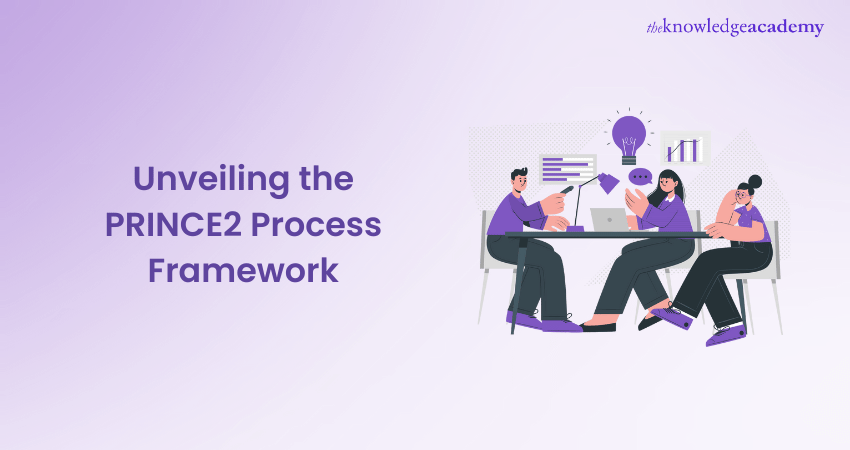
Projects are the lifeline of every business, and whether a business succeeds depends entirely on its ability to handle Projects. Project Management is a hard job that requires skills like attention to detail, time management, preplanning, etc. At times, Project Managers might feel like they are walking on eggshells, and the pressure can be overwhelming. So, what could be the solution for this? PRINCE2 Processes ease the burden on Project Managers and make it easy to manage Projects.
Enter PRINCE2, a Project management methodology that will help Project Managers to handle Projects in a sophisticated way. PRINCE2 elevates the Project Manager's skills to tackle any situation possible. To put it simply, PRINCE2 is the smooth operator on how to manage Projects. Project Managers are the heart of a business, and Projects are its lifeline. According to a PMI Report, there's a significant talent shortage for Project Management Professionals, and by the year 2030, more than 25 million new people will be needed in this field. So, Project Managers are always in high demand with huge growth potential.
If an organisation successfully manages a Project, that will lead to more Projects. That will result in more income, more clients, and reliable and long-term clients with regular business. Incorporating the PRINCE2 Process can reap many benefits for your organisation. This blog explains in-depth the PRINCE2 Process, including how to do it, its steps and phases, preparation, planning, and implementation, and much more.
Table of Contents
1) What are the 7 Processes of PRINCE2?
a) PRINCE2 Phase1: Starting up a Project
b) PRINCE2 Phase2: Directing a Project
c) PRINCE2 Phase3: Initiating a Project
d) PRINCE2 Phase4: Controlling a Stage
e) PRINCE2 Phase5: Managing Product Delivery
f) PRINCE2 Phase6: Managing Stage Boundaries
g) PRINCE2 Phase7: Closing a Project
2) Conclusion
What are the 7 Processes of PRINCE2?
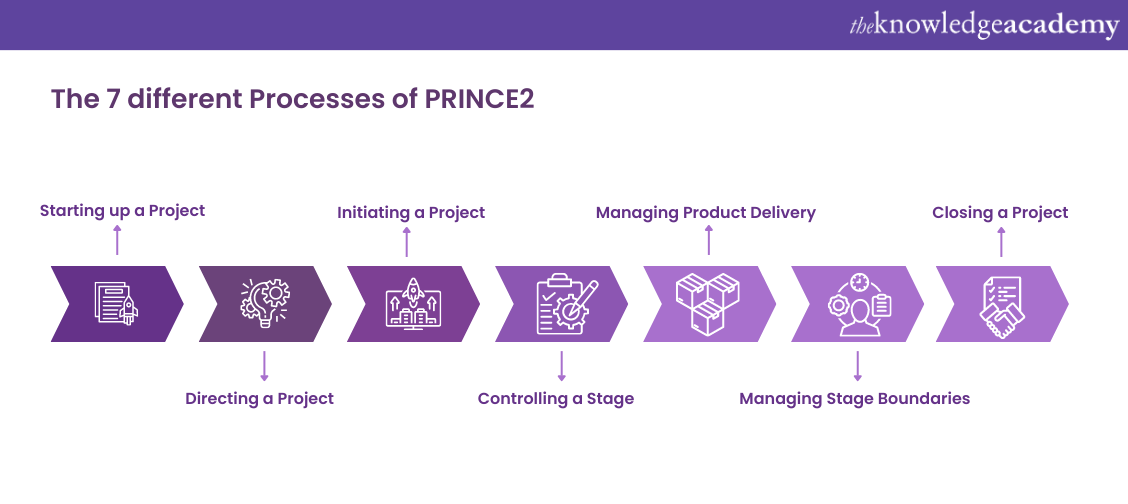
A PRINCE2-qualified Project Manager can manage Projects in a better way by utilising the power of PRINCE2 Processes. PRINCE2 Processes are divided into seven phases to make it easier to manage Projects. In this section, you will learn the Seven Processes of PRINCE2 and how to implement them. These Seven PRINCE2 Processes are listed below:
1) Starting up a Project
2) Directing a Project
3) Initiating a Project
4) Controlling a Stage
5) Managing Product Delivery
6) Managing Stage Boundaries
7) Closing a Project
PRINCE2 Phase1: Starting up a Project
Before starting a Project, you must consider things like preplanning, etc. This phase is very crucial, as if this goes wrong, everything might go wrong. So, we cannot stress the importance of this phase anymore. During this phase, the Project Board will appoint the Project Manager who oversees the execution of the Project. Then, the Project Manager will appoint the entire team working on this Project. Apart from this, the lessons from the previous Projects are studied and implemented before developing the Project plan.
How to implement PRINCE2 Phase1: Starting up a Project?
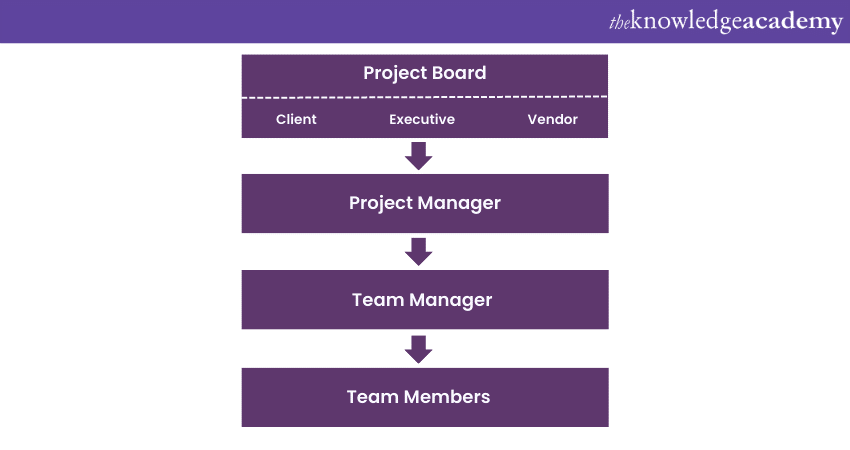
Now that you know the importance of this stage let's see how to implement the first stage in PRINCE2 Process. First, create a Project management team that includes everyone who works and oversees the Projects. The first thing a Project needs is a Project Manager, and the Project Manager will then appoint the rest of the team that works on the Project. But who will oversee the Project Manager? That is where the Project Board comes in. They will oversee the work of the entire Project management team, including the Project Manager.
The first step that needs to be done; the Project Manager should prepare the necessary documentation that outlines how the Project will be executed. A few things to keep in that documentation are the lessons learned previously, including the previous success and failures. How to overcome those failures during this Project.
PRINCE2 Phase2: Directing a Project
Once you implemented PRINCE2 Phase 1, the next step is to proceed with Phase 2, Directing a Project. During this process, the Project team will get approval from the Project Board. At every stage of the Project, the Project team needs to get approval from the Project Board. This is the only process that runs throughout the Project tenure.
How to implement Phase2: Directing a Project?
During PRINCE2 phase 1, the Project Manager prepares documentation for Project execution, which should be sent for approval from the Project Board. Once this is approved, they will authorise the initiation process, approve any plans during the Project, and give directions throughout the Project execution.
PRINCE2 Phase3: Initiating a Project
Initiating a Project is an essential process where the Project management team focus on what is necessary to achieve the target successfully. It will focus on the Project's purpose, drawdowns, and advantages. So, this process is all about creating a fundamental structure for the Project and a proper plan. This stage is the forte of the Project Managers, and much of their work is done here.
Here the Project Manager will initiate the Project, create the Project definition, and work on the possible use cases for the end product. They are also responsible for creating the team and assigning roles to every team member. Once everyone's roles are assigned, they must be equipped with a proper communication channel. Apart from this, they also set up files for working on the Project and controls for the Project.
How to implement Phase3: Initiating a Project?
Project Managers completely take care of the implementation of this phase. The Project Manager will optimise the execution further by focusing on what is necessary for completing the Project and what is irrelevant and can be sized down. Next, the Project Manager will create the Project's risk management approach that the Project Board approves. They are also responsible for creating a methodology for managing the budget and profitability.
PRINCE2 Phase4: Controlling a Stage
Here, the Project Manager splits the Project into different Processes called work packages. Splitting the Project into smaller packages smoothens the work burden and prevents unnecessary delays. These Processes will then be allocated to different teams. Team managers play a key role in this PRINCE2 phase and will act as an intermediary between the team members and the Project Manager. The Project Manager will supervise the whole process and only intervene if things don't go according to the plan. The Project Manager continuously monitors the Project flow to ensure that the Project runs smoothly without any hiccups.
How to implement Phase4: Controlling a Stage?
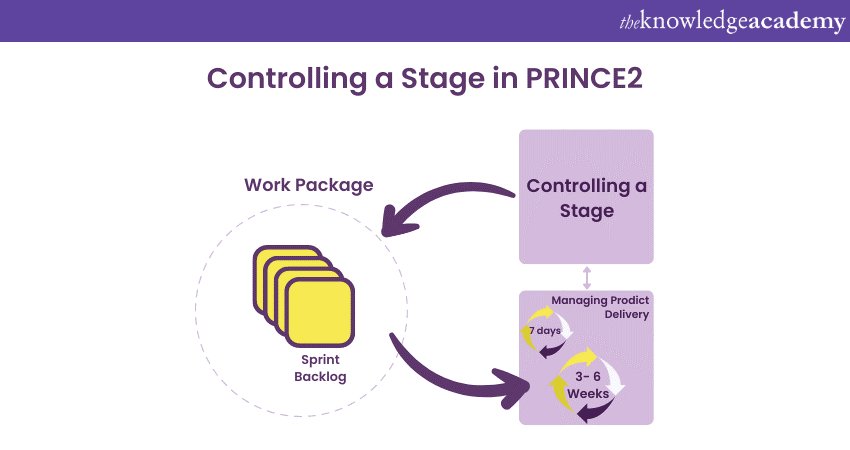
This PRINCE2 Process is all about controlling the pace of the Project. Here the Project Manager will create and authorise work packages. The work is assessed properly at each stage to find any issues. If there's any issue, the Project Manager would step in and would try to rectify it by taking appropriate measures. If the issue persists, the Project Manager should report and escalate it to the Project Board. Once the issues are fixed, the Project Manager will deliver the finished package.
PRINCE2 Phase5: Managing Product Delivery
In this process, the execution of the work is done. After that, the final product is delivered. The Project Manager monitors this phase thoroughly so that the Project is executed as per the plan and all the instructions are followed. It is a critical process as the Project Manager will have to take some measures so that the Project runs smoothly without any interruptions.
How to implement: Managing Product Delivery?
The Project Manager will implement measures to prevent unnecessary risks and rectify all the issues related to the product. Also, the Project Manager must ensure the final product meets the quality expectations. After that, they need to receive all the work packages to finalise the delivery of the product.
PRINCE2 Phase6: Managing State Boundaries
This PRINCE2 Process is essential for the Project Board to review a phase's progress properly and approve its following PRINCE2 phase. To do this, the Project Manager needs to know the Project's current phase, where it is heading and how the final product will be. During this process, almost all the documents related to the Project are reviewed and updated, including the Project initiation document. These updates are necessary to carefully study the problems experienced in the current stage and how to overcome them in the future. This will help in managing the budget and resources optimally as well as avoiding the failures of the past.
How to implement: Managing Stage boundaries?
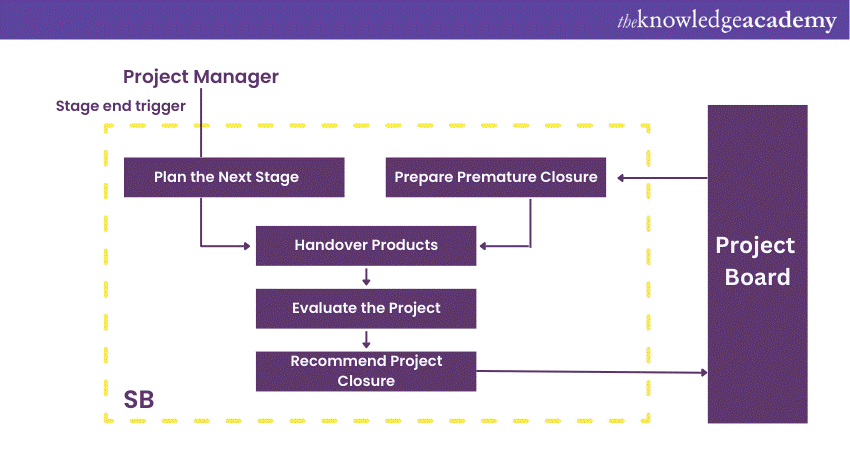
Almost all the measures in this PRINCE2 Process are predominantly performed by the Project Manager. Here the Project Manager reviews the Process that is currently under work, and once reviewed, they will approve the next Process. Then the Project's plan and the PID (Project Initiation Document) are updated as per the latest changes. After that, the Project Manager will update the Project Board on all these latest changes. Finally, if a process doesn't follow the guidelines the Project Board previously approves, it will lose its support. So, to overcome this issue, the Project Manager needs an exceptional plan to get the Project Board's approval.
PRINCE2 Phase7: Closing a Project
A Project is successfully completed only if the final process, "Closing a Project" is done. If the closing process couldn’t be completed, then it would result in unnecessary delay and all the work done in previous Processes would be in vain. Hence, this is a very important phase and would certainly have more attention from upper management.
How to implement: Closing a Project
Like some previous processes, the Project Manager implements most of the procedures here. Firstly, the Project Manager will review and finalise whether all the requirements are fulfilled and whether the Processes are done properly. During the closing, the Project Manager will update the Project plan per the actual Project's cost, timeline and other details. Sometimes the Project Board will guide the Project Manager to close the Project prematurely. In such cases, it's the responsibility of the Project Manager to save any resources they find valuable.
By the project's completion, the Project Manager should deliver the end product to the client. Along with the product, the Project Manager should deliver supporting documentation and records to the client to get the acceptance certification. Then the Project Manager will create a final Project report which contains the performance of the Project team, targets, and use cases of the product. Finally, the Project Manager will send a Project closure request to the Project Board. Then the Project Board will decide whether to close the Project or not.
The taller a building is, the stronger its foundation should be. Likewise, a Project Manager with strong knowledge of the PRINCE2® Foundation can reach greater heights.
Conclusion
We hope you enjoyed reading this article on the "Seven Processes of PRINCE2 - The Ultimate Guide for 2023." Without a doubt, PRINCE2 Processes can ease the burden on Project Managers and boost their ability to manage Projects. In today's world, passion alone is not enough to succeed, and passion combined with skill is a potent mix, and PRINCE2 is exactly that.
Signup for our PRINCE2® Training courses and fulfil your dream of becoming a Project Manager.
Frequently Asked Questions
Upcoming Project Management Resources Batches & Dates
Date
 PRINCE2® Foundation & Practitioner Training Course
PRINCE2® Foundation & Practitioner Training Course
Mon 29th Jul 2024
Sat 3rd Aug 2024, Sun 4th Aug 2024
Mon 5th Aug 2024
Mon 12th Aug 2024
Sat 17th Aug 2024, Sun 18th Aug 2024
Mon 19th Aug 2024
Tue 27th Aug 2024
Sat 31st Aug 2024, Sun 1st Sep 2024
Mon 2nd Sep 2024
Mon 9th Sep 2024
Sat 14th Sep 2024, Sun 15th Sep 2024
Mon 16th Sep 2024
Mon 23rd Sep 2024
Sat 28th Sep 2024, Sun 29th Sep 2024
Mon 30th Sep 2024
Mon 7th Oct 2024
Sat 12th Oct 2024, Sun 13th Oct 2024
Mon 14th Oct 2024
Mon 21st Oct 2024
Sat 26th Oct 2024, Sun 27th Oct 2024
Mon 28th Oct 2024
Mon 4th Nov 2024
Sat 9th Nov 2024, Sun 10th Nov 2024
Mon 11th Nov 2024
Mon 18th Nov 2024
Sat 23rd Nov 2024, Sun 24th Nov 2024
Mon 25th Nov 2024
Mon 2nd Dec 2024
Sat 7th Dec 2024, Sun 8th Dec 2024
Mon 9th Dec 2024
Mon 16th Dec 2024
Mon 6th Jan 2025
Mon 13th Jan 2025
Mon 20th Jan 2025
Mon 27th Jan 2025
Mon 3rd Feb 2025
Mon 10th Feb 2025
Mon 17th Feb 2025
Mon 24th Feb 2025
Mon 3rd Mar 2025
Mon 10th Mar 2025
Mon 17th Mar 2025
Mon 24th Mar 2025
Mon 31st Mar 2025
Mon 7th Apr 2025
Mon 14th Apr 2025
Tue 22nd Apr 2025
Mon 28th Apr 2025
Tue 6th May 2025
Mon 12th May 2025
Mon 19th May 2025
Tue 27th May 2025
Mon 2nd Jun 2025
Mon 9th Jun 2025
Mon 16th Jun 2025
Mon 23rd Jun 2025
Mon 30th Jun 2025
Mon 7th Jul 2025
Mon 14th Jul 2025
Mon 21st Jul 2025
Mon 28th Jul 2025
Mon 4th Aug 2025
Mon 11th Aug 2025
Mon 18th Aug 2025
Tue 26th Aug 2025
Mon 1st Sep 2025
Mon 8th Sep 2025
Mon 15th Sep 2025
Mon 22nd Sep 2025
Mon 29th Sep 2025
Mon 6th Oct 2025
Mon 13th Oct 2025
Mon 20th Oct 2025
Mon 27th Oct 2025
Mon 3rd Nov 2025
Mon 10th Nov 2025
Mon 17th Nov 2025
Mon 24th Nov 2025
Mon 1st Dec 2025
Mon 8th Dec 2025
Mon 15th Dec 2025







 Top Rated Course
Top Rated Course



 If you wish to make any changes to your course, please
If you wish to make any changes to your course, please


